It's always a good time to make a sourdough starter! Whether you are making your own starter, bought a sourdough starter, or perhaps you got one from a neighbor or friend (lucky you!), you have to keep it alive. In this post, we'll break down how to feed your sourdough starter, the equipment you'll need, and what to do with sourdough discard.
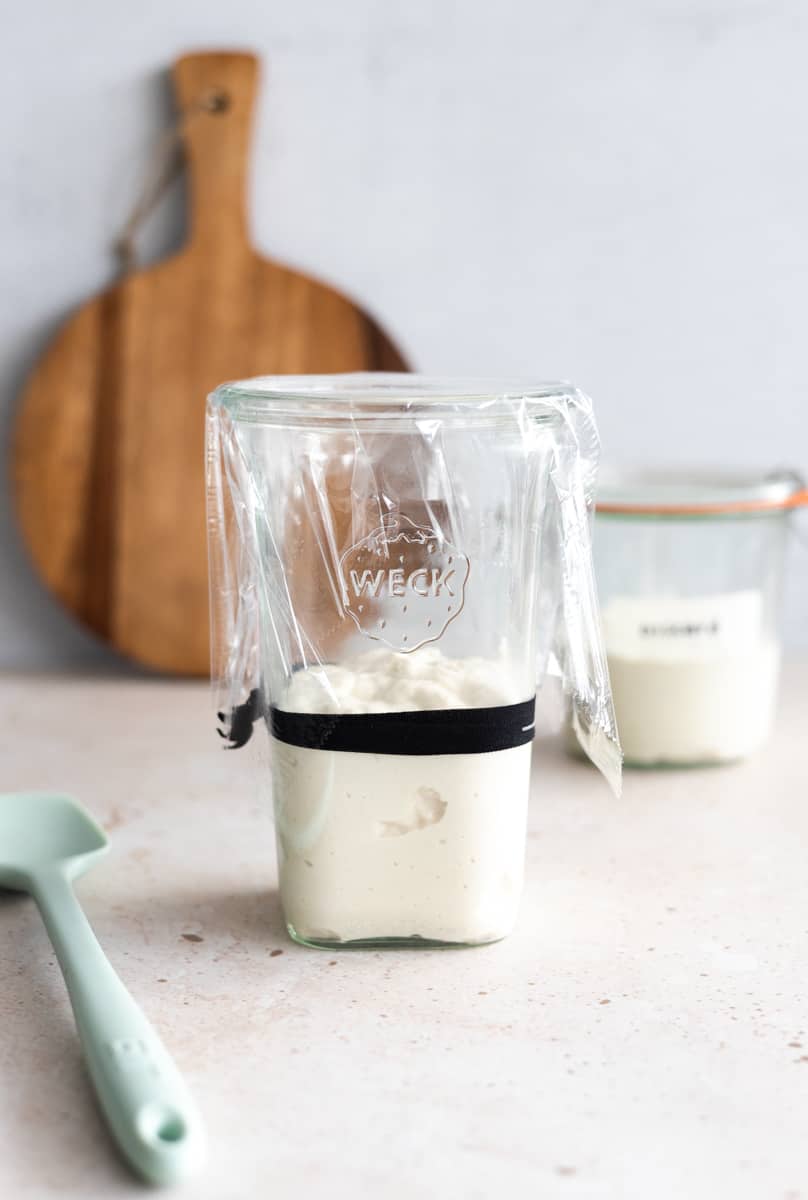
If you have questions that aren't covered here, feel free to leave them in the comments! We'll update this post regularly to make sure we're helping you with your sourdough experience.
For more in-depth sourdough information, check out my post on how to use sourdough discard and tips for struggling sourdough starter.
Jump to:
What is sourdough starter?
Let's start with the basics. Sourdough starter is a live fermentation of flour and water, which creates natural yeast and good bacteria. Sourdough starter is used to create many artisan breads and baked goods. You likely know it for its signature "sour" flavor that it lends to sourdough bread.
Where to get sourdough starter
Before you go further in this post, you need to have a sourdough starter. If you already have one, you're all set. If you would like to make one or get one, there are a few options:
- Make your own sourdough starter: You can make your own sourdough starter with this sourdough starter recipe! Be prepared: making a sourdough starter from scratch can take anywhere from 1-3 weeks. Settle in and enjoy the process!
- Buy a sourdough starter: You can buy a sourdough starter at certain grocery stores or order it online. This is definitely easier than making it (it always is, right?). If you need to use the starter quickly, this might be your best bet.
- Get a starter from a friend: If you have a friend or neighbor who has a sourdough starter, they might be willing to give you some of their discard. You can then feed the discard to make your own sourdough starter. If you're doing this, make sure to ask for the recipe they used to make it so you can feed it in the same way.
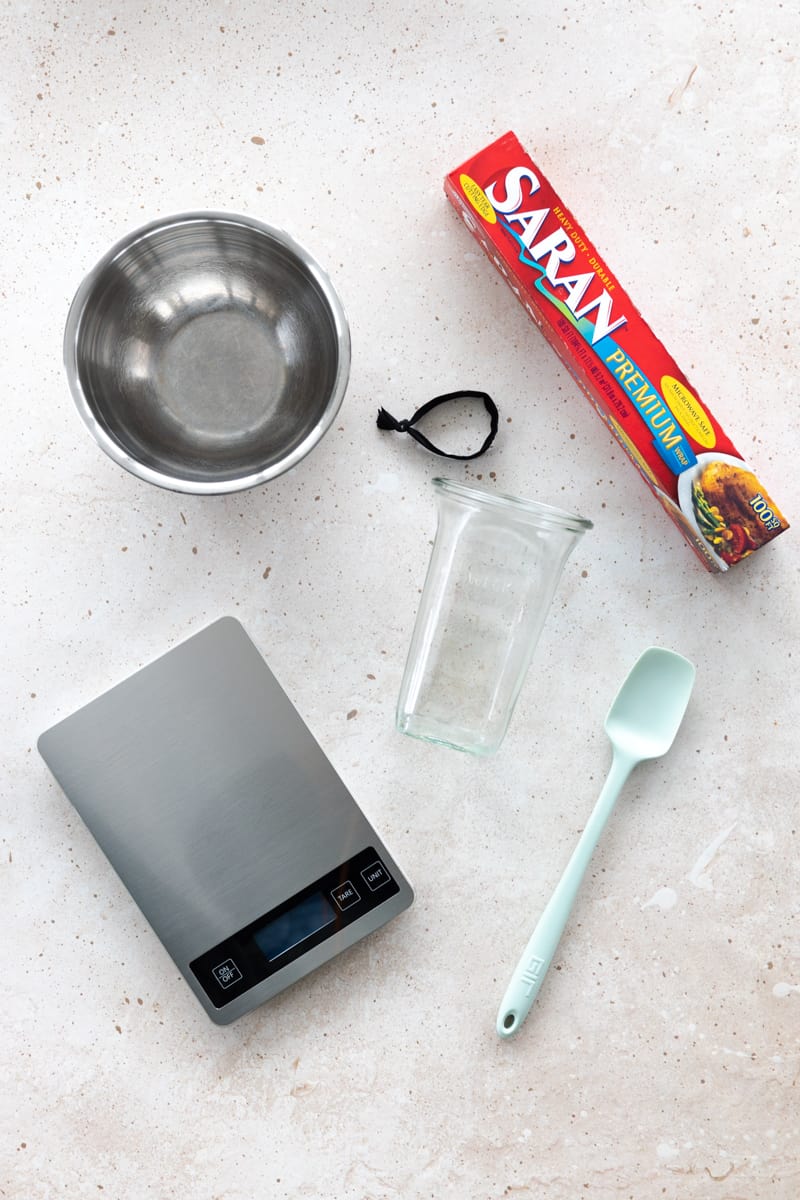
Equipment for feeding sourdough starter
Sourdough starter can seem really fickle (or really sciencey), but rest assured, it's really hard to kill a starter once it's up and running! Whether you're making a new sourdough starter or maintaining one you already have, you will need a few key items:
- A sourdough jar: I like to use a Weck Tulip Jar (1-liter size). It's a great shape, easy to clean, and has plenty of room for my starter to expand. You can use any kind of jar, but the important thing is that there is room for the starter to expand and double, or even triple its size. A too-small jar or container will overflow.
- A kitchen scale: You will need a kitchen scale to accurately measure your starter and the flour and water you will add during feeding. I do not recommend trying to maintain a sourdough starter without a kitchen scale. If you're new to using a kitchen scale, it is easy and honestly can be easier than using measuring cups!
- A few utensils: A good spatula will be your best friend to mix your ingredients and move your starter from a mixing bowl to the jar during feedings. I highly recommend a GIR Skinny Spoonula as a great tool for reaching into tall jars and mixing ingredients, but use whatever feels best to you!
Optional items:
- A rubberband: Simple, I know, but you can use the rubberband to mark where your sourdough starter is (the height in the jar) after you feed it. This allows you to easily see how much it grows, which tells you how active it is and when it's ready to use.
- Once your starter is well-established and you're familiar with it, you likely won't need this. It is helpful in the beginning, though, so you can see when it really is doubling!
- Plastic wrap: I like to cover my jar loosely with plastic wrap. When I say loosely, I mean very loose - as if you're doing a very bad job covering something in plastic wrap. This keeps the moisture in the jar and helps to keep the starter warmer, but also lets air into the jar and lets some of the gas escape, which is very important. This also keeps anything from getting into the jar. Do not use the lid of the jar to cover the starter - this should not be an air-tight seal!
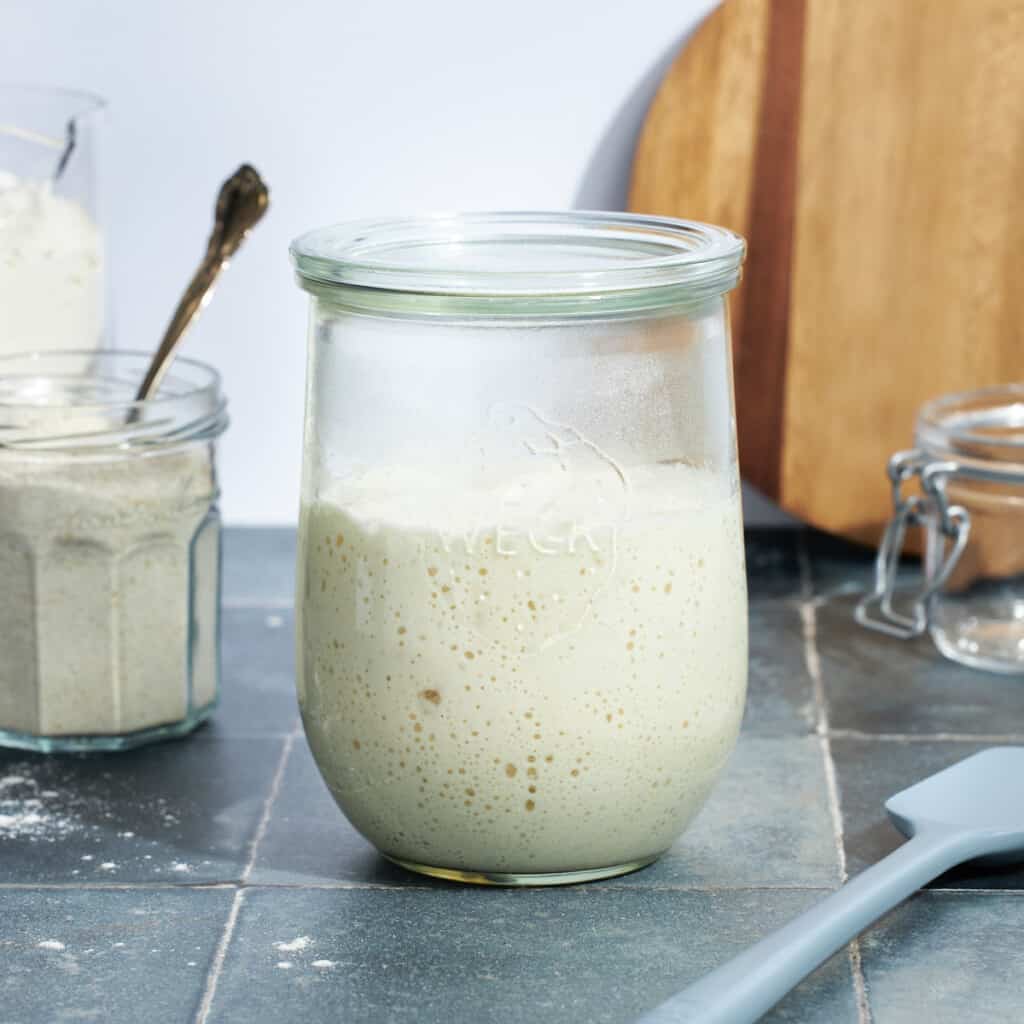
kitchen essentials
My Favorite Sourdough Starter Jar
The perfect jar for maintaining a sourdough starter!
When to feed your starter
Once your sourdough starter is up and running and you're in "maintenance mode," you will need to feed it regularly. How often you feed the starter is up to you, based on how often you want to use it:
- If you use the starter frequently (daily): If you use your starter to bake something daily (this is not most people), you can store your starter at room temperature and feed it once per day.
- If you use the starter less frequently (1 x week or less): If you use your starter to bake something once per week, or even less (this is probably most people), then you should store your starter in the refrigerator, loosely covered with plastic wrap. I recommend feeding your starter once per week to keep it nice and active, but you can go up to two weeks without feeding the starter without having any issues.
The feeding process is the same regardless of how frequently you are feeding the starter.

Sourdough starter immediately after feeding.
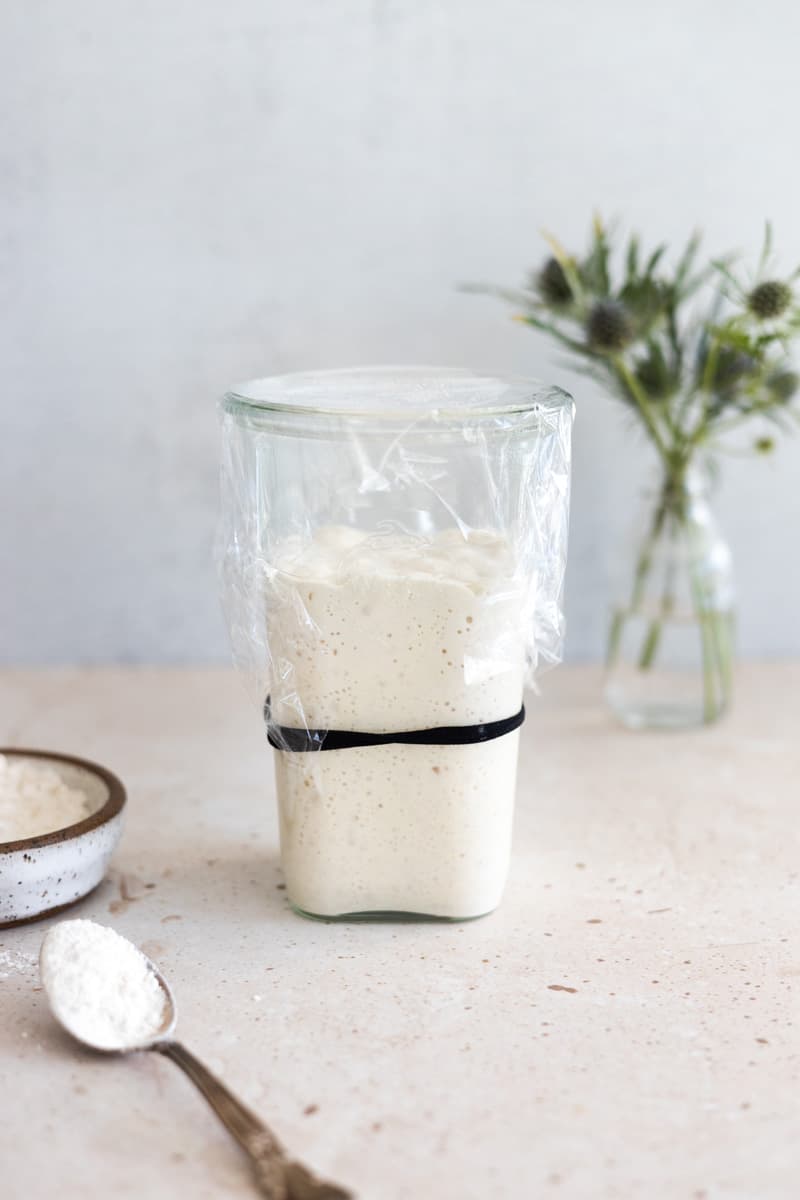
Sourdough starter after sitting at room temperature for about two hours after feeding. At this point, transfer the starter to store in the refrigerator.
How to feed sourdough starter
When you are ready to feed your sourdough starter, remove it from the refrigerator and let it come to room temperature (I allow mine to sit on the counter for about 2 hours before feeding). As the starter warms up, you'll likely see it expand and rise in the jar. This varies based on how long since the last feeding. If your starter isn't rising at room temperature before feeding, that's ok. That just means it needs to be fed to stay active!
The amount that you feed will be determined by the recipe you used to make the starter. For this example, I'll use my own starter that I made with this sourdough starter recipe (this is a 1:1 starter, using 1 part flour, 1 part water).
To feed my starter, I use:
- 100g sourdough starter
- 100g unbleached all-purpose flour
- 100g warm water
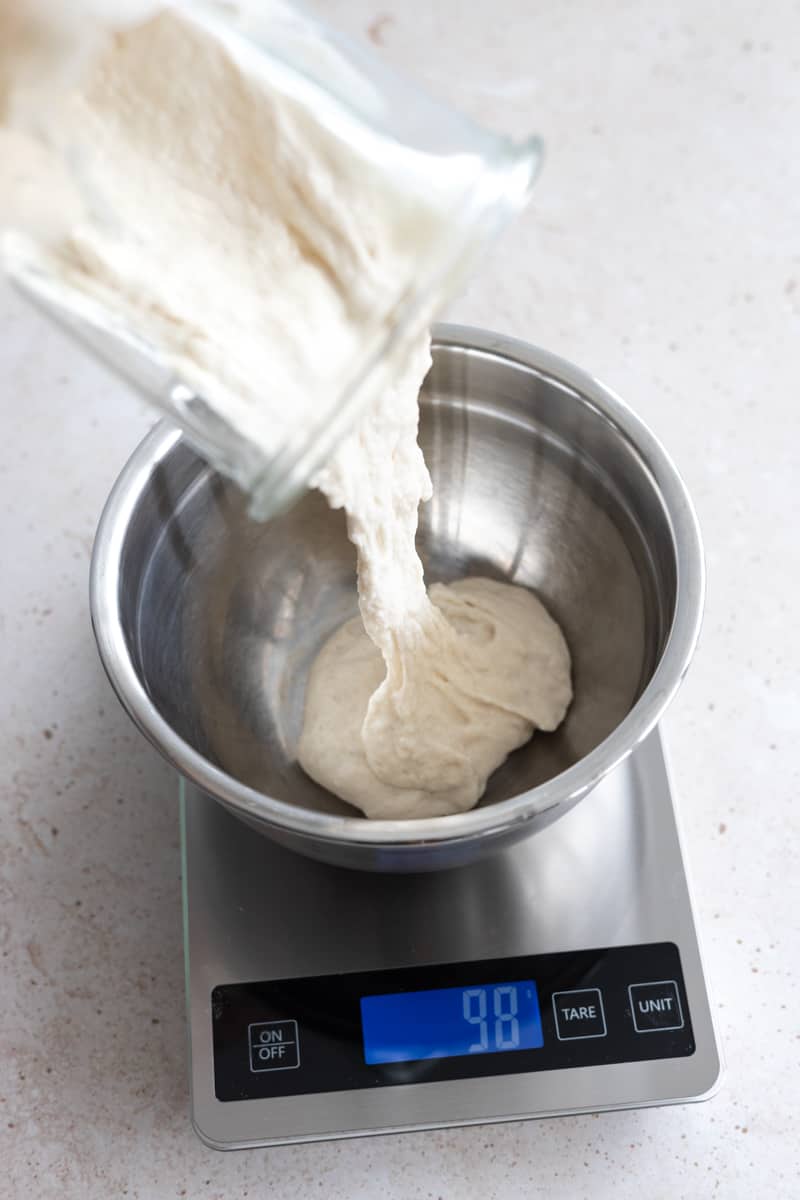
Measure out the determined amount of starter. For my starter with the recipe linked above, this means I measure out 100g of starter.
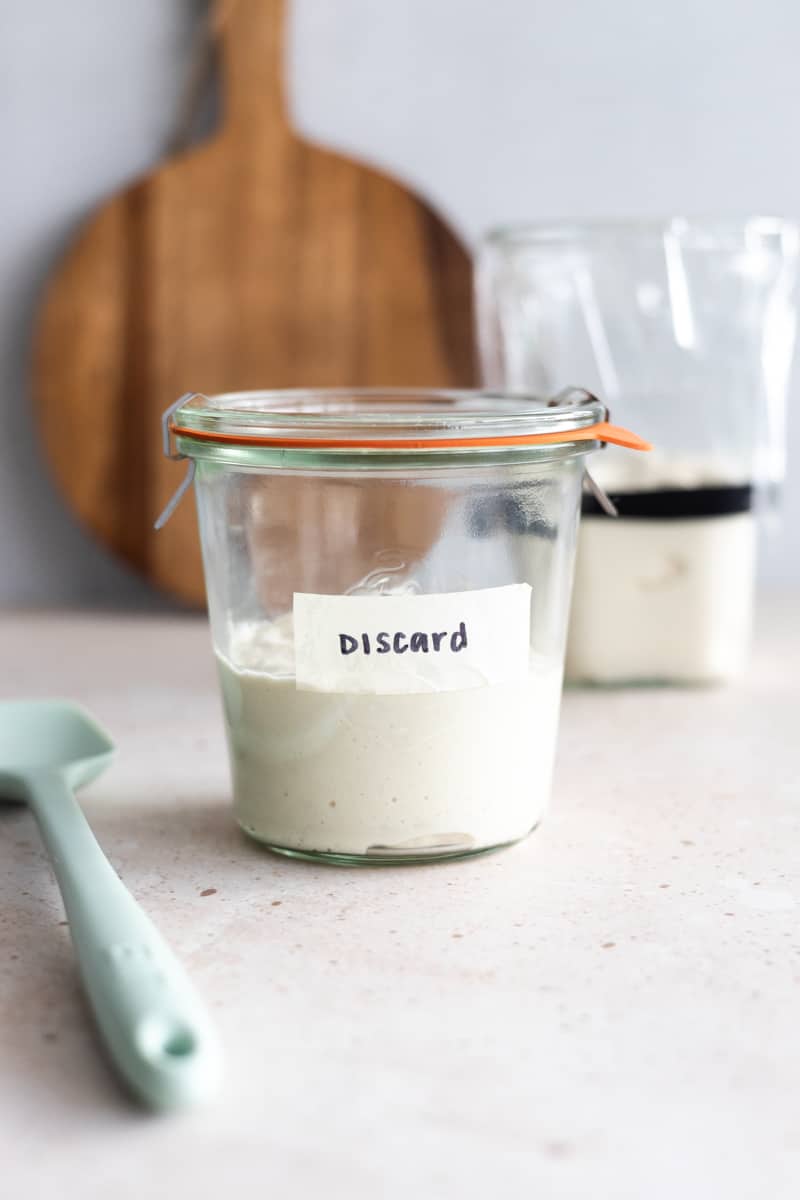
Discard the remaining starter that is left in the jar. You can either literally discard this (compost or trash) or you can use it to make sourdough discard recipes. If you are literally discarding, DO NOT put this down your sink drain. It will harden into something close to cement and clog your pipes.
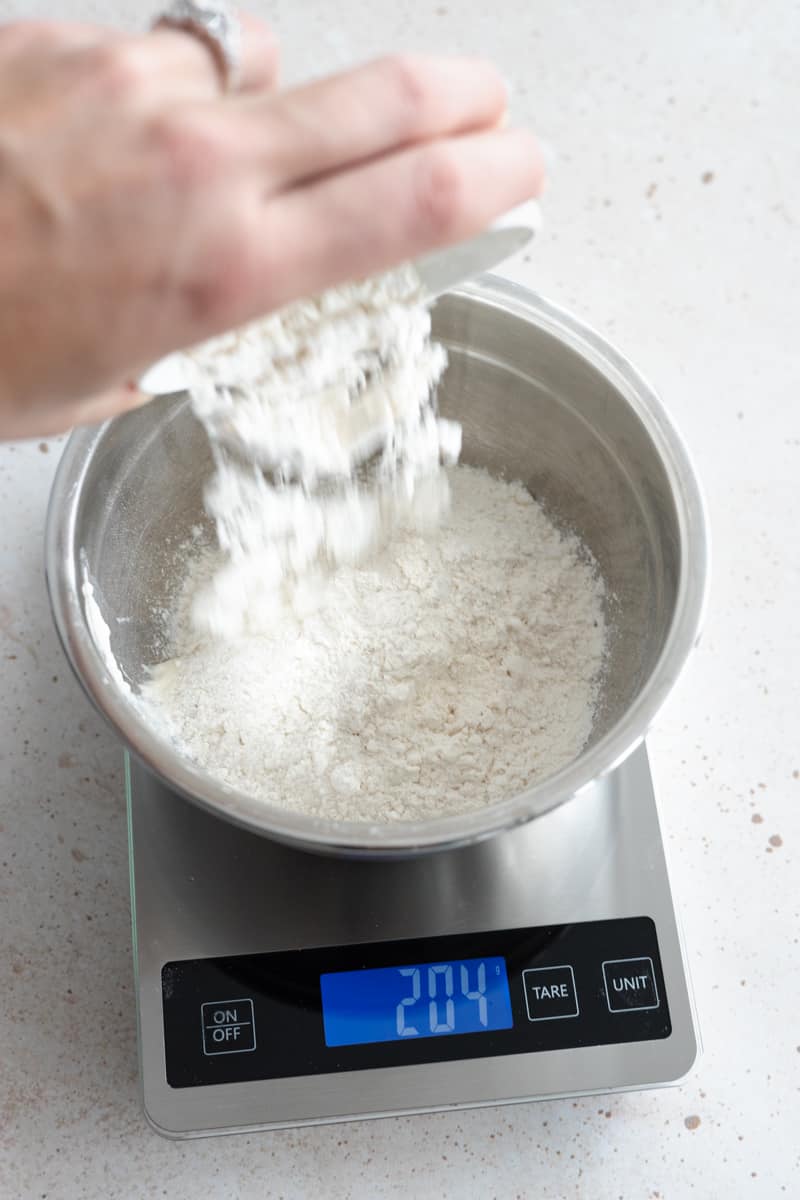
Add the determined amount of flour. For my starter, this is 100g of all-purpose flour.
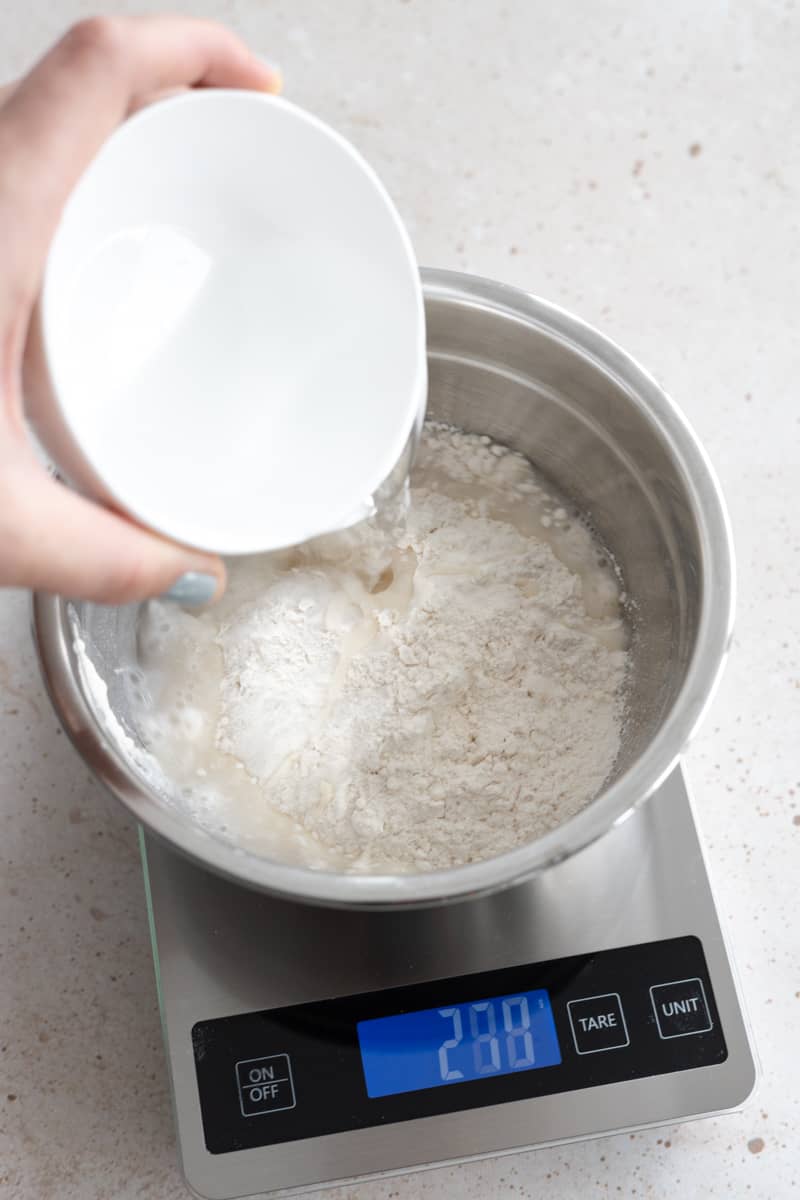
Add the determined amount of warm water. This should be quite warm. Not hot enough to burn your hand, but quite warm. For my starter, this is 100g warm water.

Mix everything together in the bowl and wash out your starter jar. You don't have to wash the jar every time, but know that once the starter hardens, it's like cement and much harder to clean (you can always soak it).
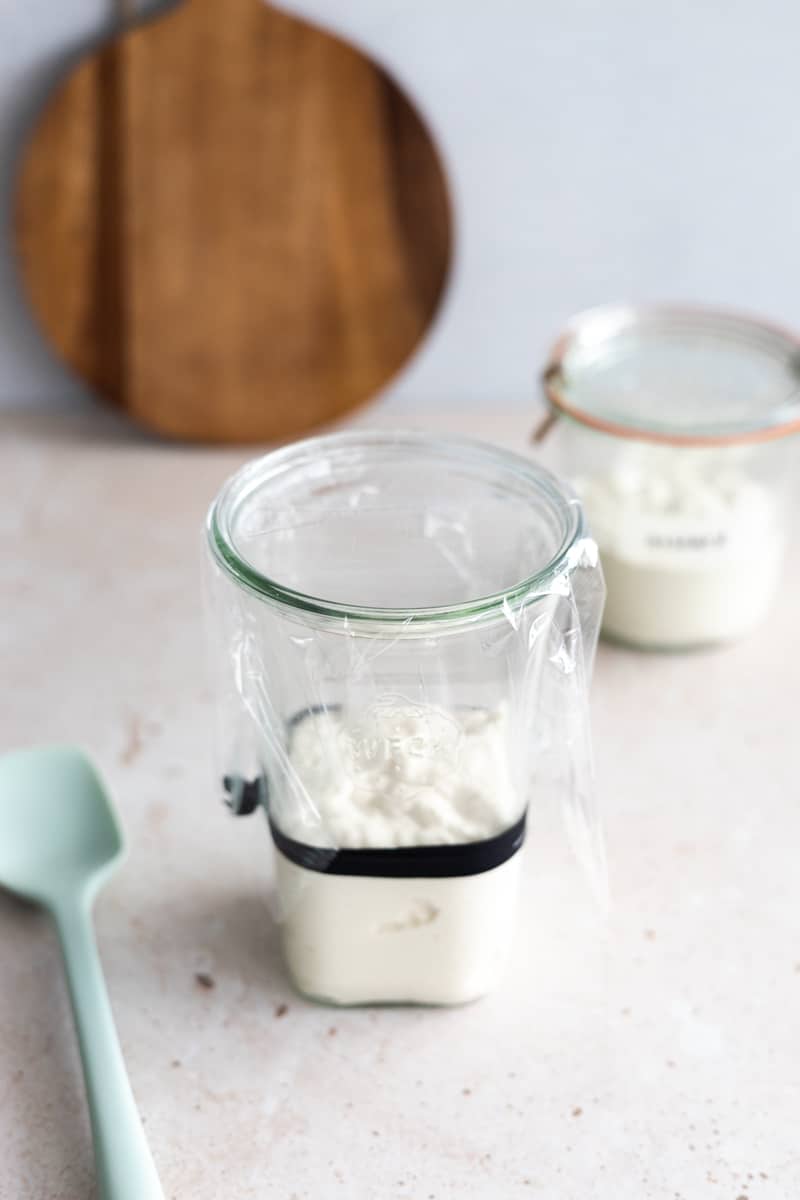
Transfer the fed starter from the bowl to the clean jar, place the rubberband at the level of the starter, and loosely cover with plastic wrap.
Once the starter is back in the jar, I like to let the jar sit at room temperature for about 2 hours to let the feeding kick in. You will see the starter rise during this time.
Insider Tip: It's hard to kill an active sourdough starter. You don't have to be super precise with the feeding measurements. If you add a little more or a little less of one of the ingredients, it will be ok! The most important thing is to remember to use warm water, but even if you don't, the starter will be ok!

What is sourdough discard?
Sourdough discard is what is leftover after you feed your sourdough starter. This is the part of the starter that you did not feed.
There are several things you can do with your sourdough discard:
- Discard it: As the name suggests, you can literally discard it. DO NOT put this down your sink drain as it will harden into something close to cement and will clog your pipes. Either compost or throw the discard in the trash.
- Use it immediately for baking: If you are going to bake something right away (same day), you can keep the discard at room temperature until you're ready to bake. Check out a few of my favorite sourdough discard recipes here.
- Store it for future baking: You can store sourdough discard in an airtight container in the refrigerator for future baking with sourdough discard recipes. When you're ready to use it, let the discard come to room temperature before using it to bake.
- I will keep sourdough discard in the fridge for about one week. I do know others that keep it much longer. The longer you keep it, the higher the risk of the discard growing mold or bad bacteria.
- Make another starter: If you want to have a second starter, you can feed the discard as well, and make another starter!
- Give it to someone to make their own starter: If you want to give someone some of your sourdough starter, you can give them discard! Feed your sourdough starter as normal, then give away the discard to a lucky friend or neighbor. Make sure to leave them with instructions on how to feed it.
Sourdough Discard Recipes
If you want to bake with your sourdough discard, below are some of our favorite sourdough discard recipes! Happy baking!
Things to remember
- It's hard to kill a sourdough starter! Did you add a little too much water, or a little less than you were supposed to? Are you heading out of town and need to let your starter go for two weeks without a feeding? Did you forget to put it back in the refrigerator overnight? It'll be ok!
- Temperature is important. Sourdough starter really thrives when it's kept around 70 degrees F. If you're storing it at a lower temperature (i.e. in the refrigerator, or if your house is cooler than 70 degrees), the starter will not be as active. On the other hand, yeast dies at around 140 degrees F, so if you somehow overheat your starter (perhaps by leaving it in your oven....), it will die and you'll need to start over.
Feeding Sourdough Starter FAQ
Depending on your environment, weather and season, making a sourdough starter can take anywhere from 1-3 weeks. The first time I tried to make a starter, I failed. It was wintertime in Chicago, our house was fairly cool (sourdough starter likes to be kept warm), and I gave up before the starter really "got there." The second time I tried, it was a success, but I was also more prepared! You can use this sourdough starter recipe to make your own.
Your sourdough starter can last forever, honestly! There are stories of sourdough starters being passed down for generations. As long as you continue feeding it, your sourdough starter will keep living.
I recommend keeping sourdough discard for up to one week, but I know others that keep it for much longer. After one week point, it has a higher risk of starting to grow bad bacteria and mold. DO NOT put sourdough discard down your sink drain - it will harden and clog your pipes. To discard, you can either compost or dispose of it in the trash.
This depends on how often you want to use it. If you are baking with the starter daily (not necessarily typical), then you'll want to feed the starter daily. If you're baking with the starter once per week (more common), then you'll want to feed the starter weekly.
I recommend feeding the starter at least weekly to keep a healthy, active starter.
You should aim to feed your sourdough starter at least every two weeks if it is stored in the refrigerator. If you're going on vacation for longer than that by a few days, you'll likely be ok. If you're pushing it to three weeks or more, consider leaving your starter with a friend who will feed it (like taking care of a house plant!). You can also freeze your sourdough starter in a freezer-safe bag or container.
Yes. If you need a break from your sourdough starter (or maybe you're heading on a long vacation), you can freeze it in a freezer-safe bag or container. When you're ready to use it again, let it thaw for 2-3 days in the refrigerator, then feed it as you would normally. You may need to feed it a few times before it's as bubbly and active as it was before freezing.
Check out this post on tips for struggling sourdough starter.


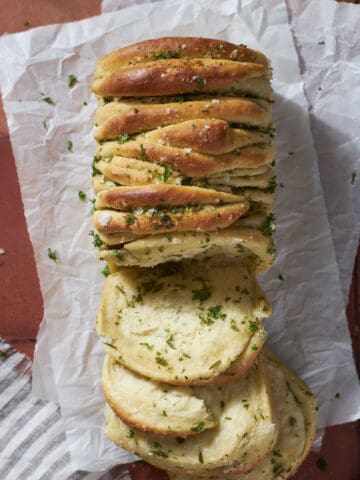

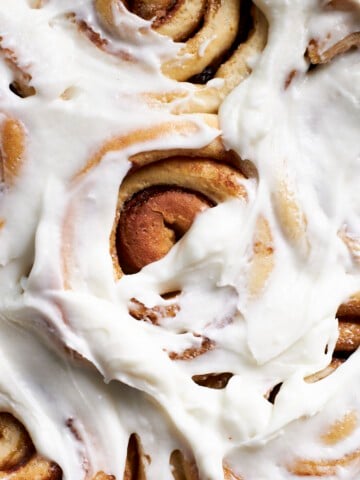


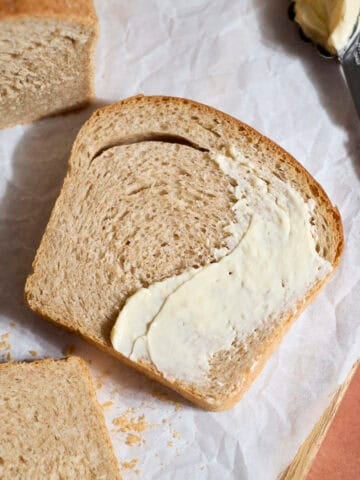
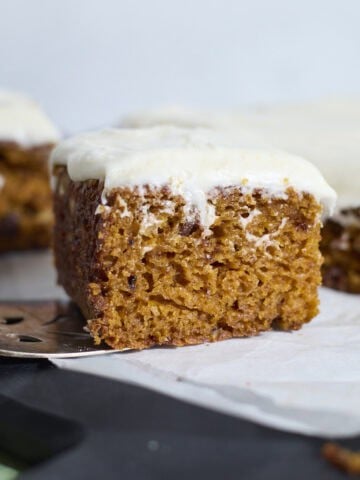
G says
This is great info!! Is this available in a downloadable/printable pdf type version?! This would be key to adding my recipe book as an easy go to refresher.
Jessica Vogl says
Ohhh good idea! I don't have it as a printable at the moment, but that's a great idea. Adding it to my to-dos!
Meaghen says
Do you have just a sourdough bread recipe?!
Jessica Vogl says
I don't at the moment, but it's something I need to work on! I focus on mainly sourdough discard recipes at the moment.
Mary says
I do a 4oz feed and I see your recipes call for 200g of discard. So remove 4oz of discard then feed 4oz AP flour and 4oz warm water. Do I need to make adjustments to use your recipes?
Jessica Vogl says
Your starter uses a 1:1 ratio, so it will work well for my recipes!
PATRICIA MILFORD says
Oh gosh! I’m so glad that I
found this! This all seemed way out of my league until I read this!
Thank you!
Jessica Vogl says
You can do it!!
Colleen Dobry says
Sooo helpful! Especially the note about never pouring it down the sink. Yikes! Thanks for the detailed instructions. I read that sourdough (especially homemade) can have low enough gluten to qualify as gluten-free (per Lily Nichols) so it’s a goal this year to master a few recipes!